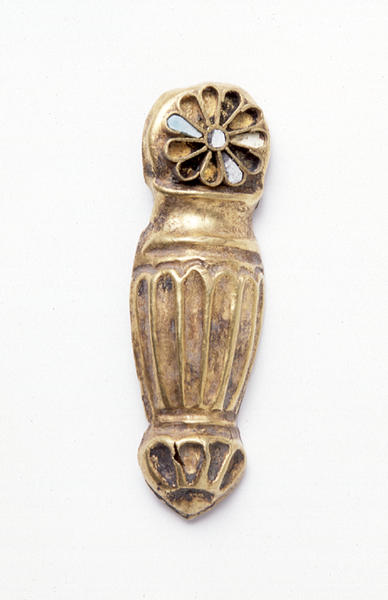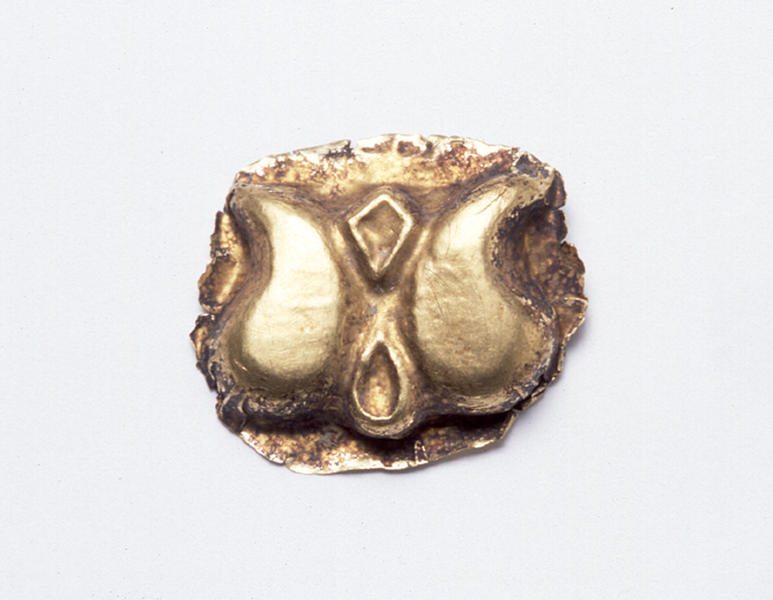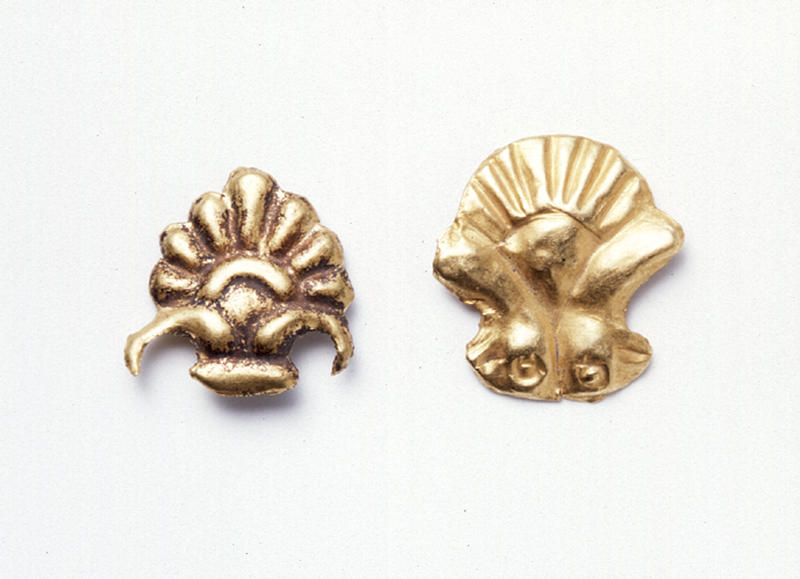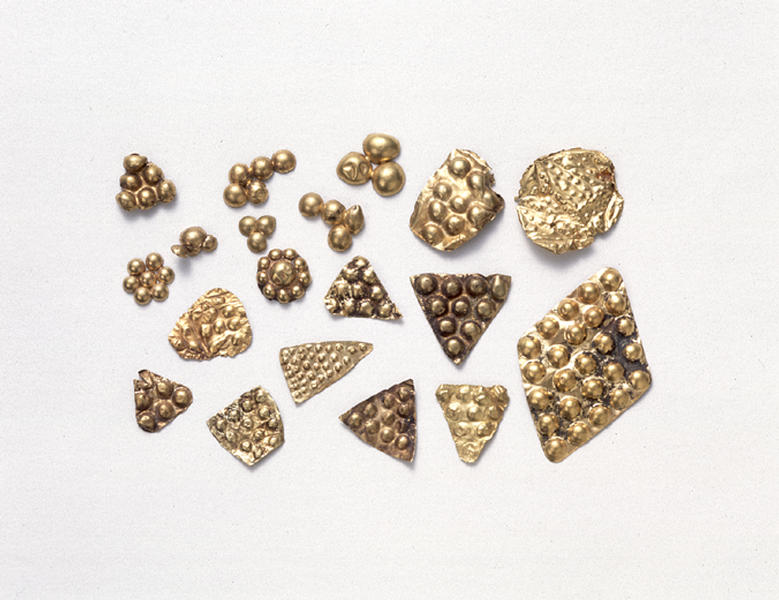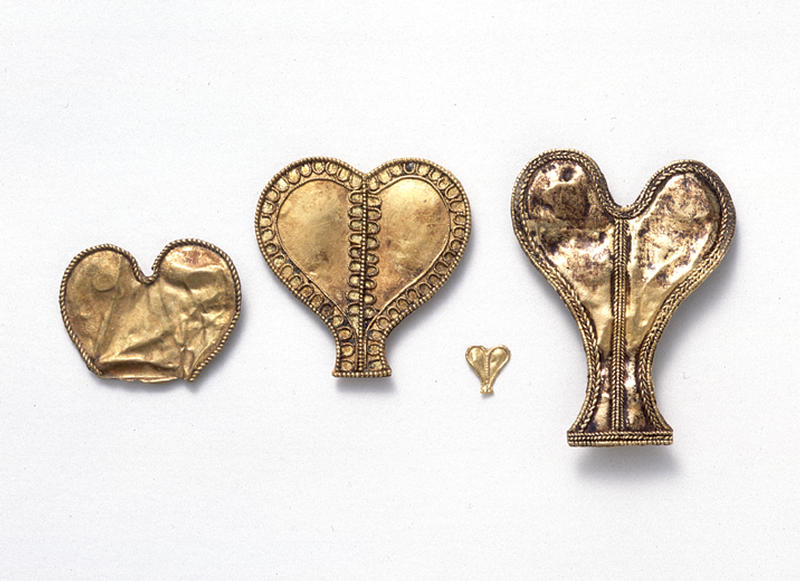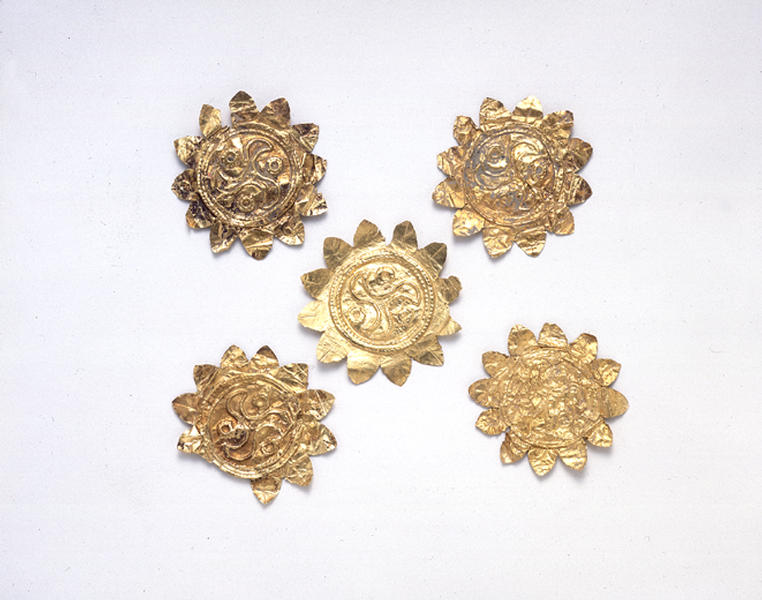Appliques and Brooches
- 5th - 2nd century B.C.
- Gold
Catalogue Entry
5th‐2nd century B.C.
Gold
(a)H. 4.3 cm, W. 1.4 cm (b)H. 1.8 cm, W. 2.0 cm
cH. 1.4-1.7 cm, W. 1.4-1.5 cm(d)H. 0.6-3.7 cm, W. 0.9-2.5 cm
(e)H. 0.8-4.9 cm, W. 0.8-3.7 cm(f)H. 4.5 cm
(a) This brooch of a pressed and joined gold sheet is decorated with a beaten design of a vessel topped by a rosette. Originally the rosette was inlaid with glass.
(b), c These works are decorated with pressed botanical designs. Brooch c is worked into a palmetto shape.
(d) Small pressed balls are formed into triangular, circular, or diamond-shaped groupings. It is thought that this design included meanings of fertility or fecundity in ancient Egypt.
(e) Heart-shaped brooches or applique are formed from gold sheets which are then outlined, and center-lined with gold wire. A similar example can also be found in the Oxus treasure (no. 160).
(f) Gold foil has been cut into rosette shapes, each surrounded by twelve petals. The central medallion on each work is pressed with a propeller design which comes from the last verse of the famous tale of Achilles's heel.
